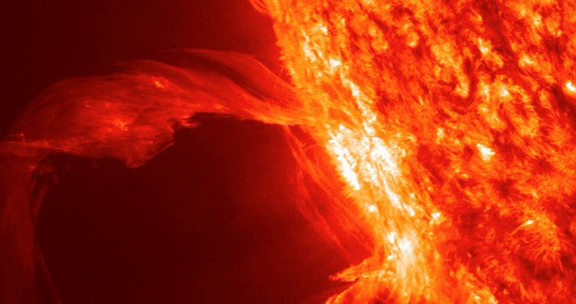Ian O’Neill
Discovery News
April 1, 2014
On Saturday, the sun erupted with an X-class solar flare, blasting Earth with powerful electromagnetic radiation. Although we couldn’t directly feel its effects on the ground, the impact of this event was measured as a dramatic radio blackout for several minutes, highlighting the fact that the sun isn’t quite done with solar maximum yet.
The X1.0 flare erupted at 1:48 p.m. ET on March 29 and an armada of solar telescopes captured the event in all its glory. A solar flare occurs when highly-stressed magnetic field lines are forced together over regions of intense magnetic activity, descriptively known as “active regions.” These regions are often associated with sunspot clusters — this is why astronomers keep count of sunspots in an effort to record solar activity.
Although we are well protected from the worst effects of radiation from solar flares, ionizing X-ray and extreme ultraviolet radiation can have a disruptive impact on unshielded satellite electronics and can even give unprotected astronauts an increased radiation dose. Our atmosphere is a thick shield that protects our biology from the sun’s worst solar flares, but that’s not to say that they can’t impact our lives.
The Emergency Election Sale is now live! Get 30% to 60% off our most popular products today!



